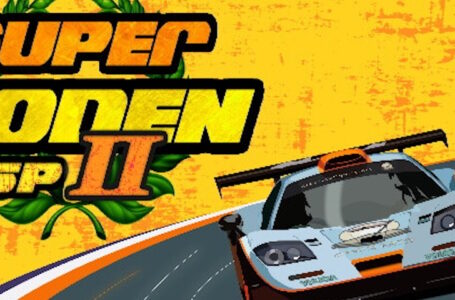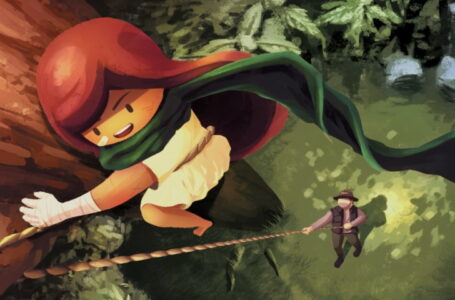Okinawa Rush’s intriguing blend of platformer, beat ’em up and fighting game
Okinawa Rush is another in the long line of today’s “modern retro” games, which take classic aesthetics and combine them with modern technology.
I find it endlessly fascinating that as technology has moved inexorably onwards and the biggest budget games out there look closer and closer to the ever-elusive “photorealism”, it seems that more and more small-scale developers are stubbornly clinging on to a distinctly “retro” look.
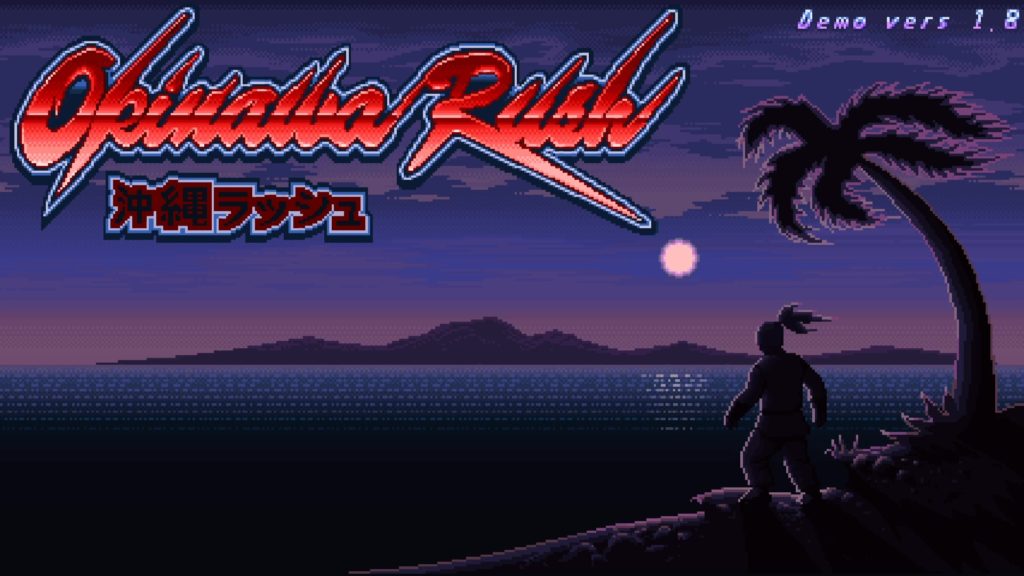
This isn’t a criticism, by any means; on the contrary, the combination of old-school pixel-art aesthetics with the power of modern hardware means that today’s developers are able to create things that they would have only been able to dream of back in the 16-bit era. Full-screen visual effects, giant sprites, tons of enemies on screen without slowdown — the sky really is the limit. And Okinawa Rush is a great example of a developer exploring these possibilities to the fullest.
So far, we’ve had a chance to go hands-on with the demo that developer Sokaikan Ltd. released as part of the recent Steam Next Fest — and those who missed out on the opportunity to try it for themselves will be pleased to hear that Sokaikan was so pleased with the demo’s performance that they’ve kept it available for a little longer. You can grab it for yourself here.
The demo version of Okinawa Rush features a tutorial prologue, the first stage of the full game and an arcade-style “Master Challenge” mode. Between these three sequences, you can get a good idea for the overall feel of the game and what it offers — and while its distinctive way of handling might not be for everyone, it’s definitely an intriguing blend of genres that is worth keeping an eye on if you’re a fan of any or all of its component parts.
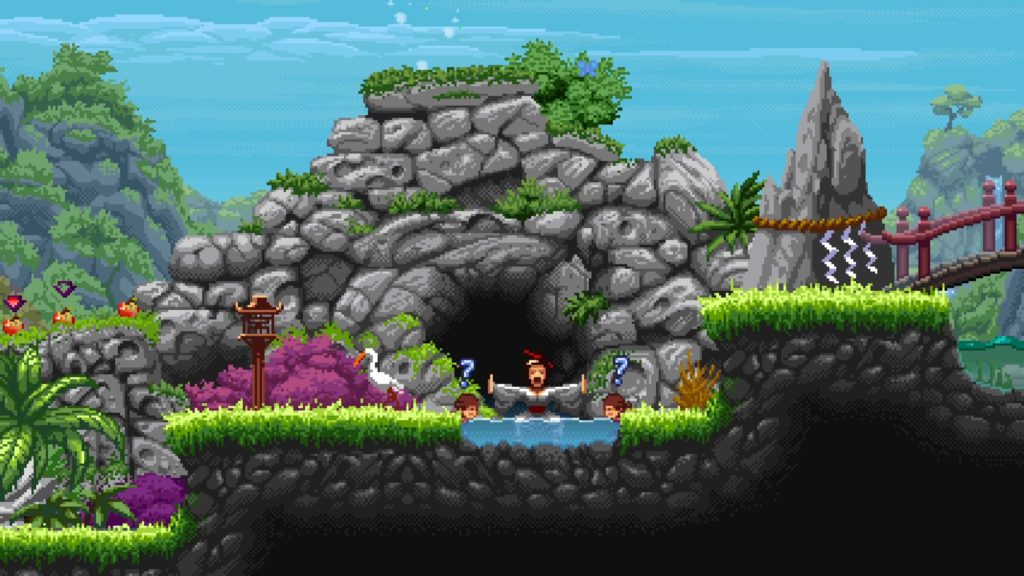
The tutorial sequence introduces you to some basic movement and attacking abilities in a safe environment as you collect some ingredients for a potion. Along the way, you’ll learn how to do the usual platform game things such as jumping down through thin platforms, plus you’ll also discover how to make use of your fighting moves to reveal hidden items and interact with characters — a particularly memorable moment occurs as you break up two squabbling children rather forcibly.
After the tutorial sequence, things go rather downhill for the character you’ve just been playing as, to put it mildly, and you’re subsequently cast in the role of one of the final game’s three playable characters for the main “stage 1” demo. From here, you’ll have to fight your way through the stage, battling enemies, discovering hidden areas, collecting items, flipping switches and making your way to the boss confrontation.
The structure of Okinawa Rush is rather interesting. Despite having a rather Japanese console game-style aesthetic, the level structure feels rather “Euro” in that it’s quite exploration-centric and involves some backtracking to pass through previously inaccessible routes. It’s not an open-structure platformer by any means, but there’s definitely the sense that you have a choice of ways to go at several different junctures — with a bit of exploration often being rewarded with collectible items or weapons.
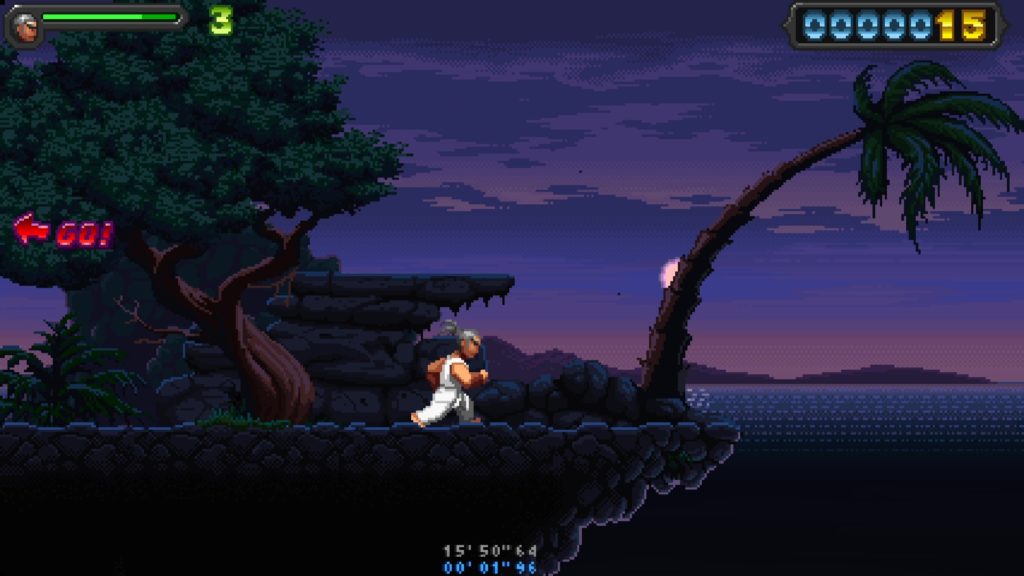
However, if you typically shy away from the sometimes directionless feel of Euro platformers, don’t fret; Okinawa Rush features beat ’em up style “Go!” arrows that always indicate the critical path onwards. Not only that, but reaching locked doors or flipping switches will give you helpful on-screen tips as to what you should do next rather than requiring you to comb the whole level for something that might have changed.
This is particularly helpful towards the end of the level, where you’ve been spending a lot of time exploring some subterranean caves, but flipping a switch down at the bottom requires you to return to the surface and head back to where you started. And the backtracking is kept interesting by new enemy spawns on the way back, meaning you’re not just retracing your steps — there’s plenty to do along the way.
Each level also houses several optional challenges that allow you to score medals; tracking these down and completing them provides plenty of replay value, as does the ranking system at the end of each stage. This is a game that has been designed with arcade-style fun in mind — not just a “once and done” sort of affair.
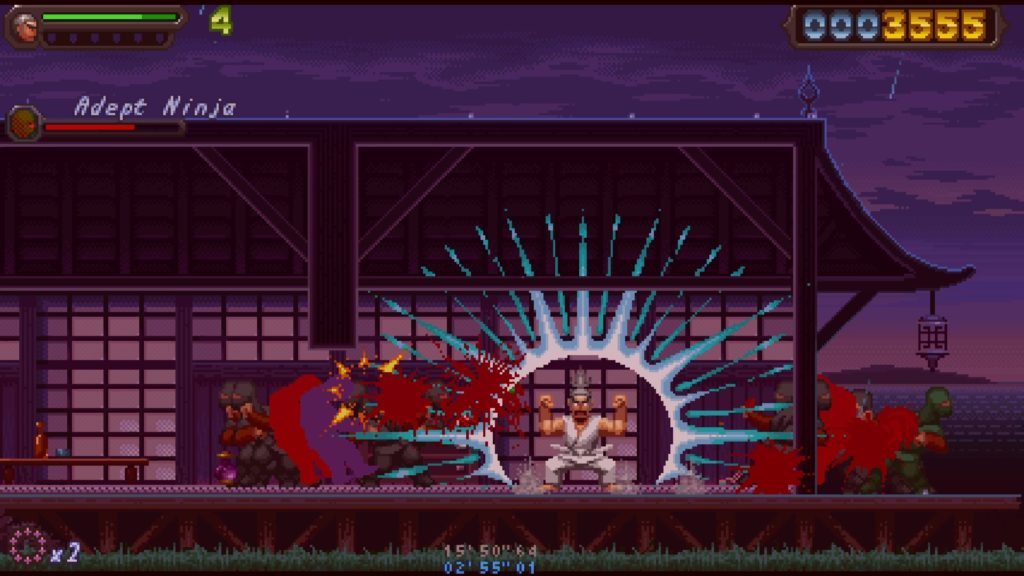
As noted above, Okinawa Rush has a rather distinctive feel to its controls that takes a bit of getting used to — and which some players may find themselves bouncing off a bit initially. There’s a distinctly stiff-feeling “snap” to the controls, particularly jumping and falling, that makes the game stand out amid many of its peers. There’s also the slight feeling at times that your character is almost running too fast; the screen scrolling keeps up with them perfectly well, but there’s something slightly uncomfortable about it when you first start playing.
The stiffness to the controls is deliberate, however, as it allows for a great deal of responsiveness and the ability to quickly move from one action into another. And since Okinawa Rush takes some heavy cues from fighting games in its combat system, this is welcome news indeed. Far from just being a game where you batter the Attack button to take down enemies, Okinawa Rush instead incorporates a variety of direction and button combinations to unleash special attacks. Some of these can be performed any time, while others cost a “Rage” resource which gradually builds up over time.
There’s also an excellent “parry” system, where pushing the directional control in the direction of an incoming attack will allow you to deflect it. This not only goes for enemy attacks, but also environmental hazards, too; this is demonstrated in the tutorial, where you have the opportunity to parry a falling stalactite before it injures you.
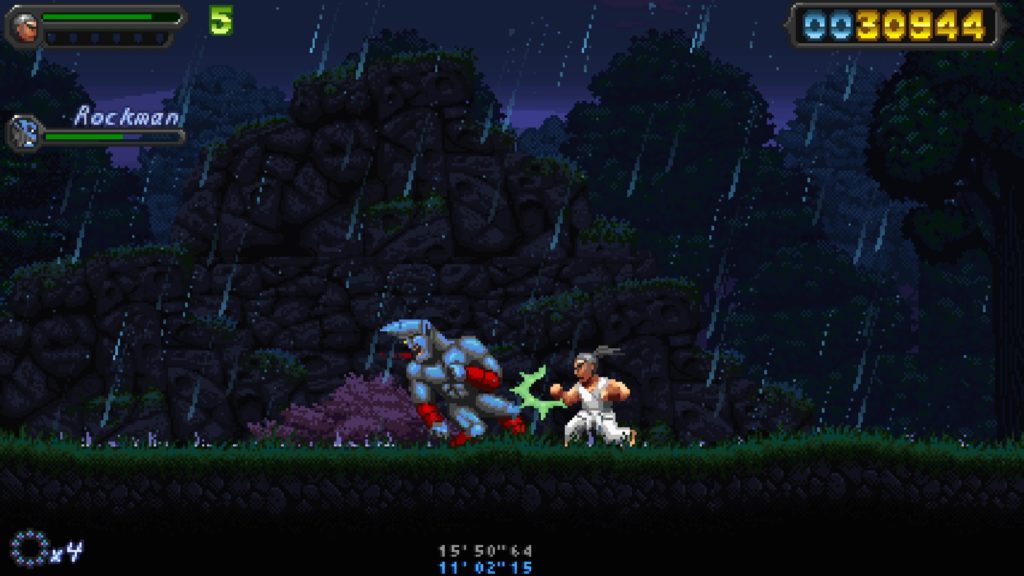
The distinct fighting game inspirations really come to the fore in the boss fights, where it’s necessary to observe your opponent’s attack patterns and find suitable openings rather than simply wailing on them as much as possible. The bosses do also incorporate the sort of area-based attacks you might expect from platform game bosses, though, making for an interesting blend of things to think about at the same time. The boss that concludes the stage 1 demo isn’t especially hard to defeat, but it is certainly satisfying to score a victory for the first time.
Okinawa Rush is looking very promising so far. Certain aspects of the controls may be a bit of an acquired taste, but I found spending just a short amount of time with the demo was enough to get a feel for its distinctive way of doing things; over the course of the complete game, things will doubtless feel even more like they’re flowing very nicely.
In the meantime, the pixel art visuals are lovely, the “modern retro” effects are great and the story is dripping with ’80s ninja warrior movie cheese in the best possible way. I’m definitely intrigued to see how it ends up, and I look forward to kicking some more ninja ass in quarter 3 of 2021.
Check out the demo for yourself and add the game to your wishlist on Steam here.
Join The Discussion
Rice Digital Discord
Rice Digital Twitter
Rice Digital Facebook
Or write us a letter for the Rice Digital Friday Letters Page by clicking here!
Disclosure: Some links in this article may be affiliate links, which means we may earn a small commission if you make a purchase after clicking on them. This is at no additional cost to you and helps support Rice Digital!
- Letter from the Editor: passing the torch - June 30, 2023
- Super Woden GP 2 is looking promising - June 30, 2023
- Inti Creates is making a 32 bit-style Love Live action platformer - June 26, 2023




